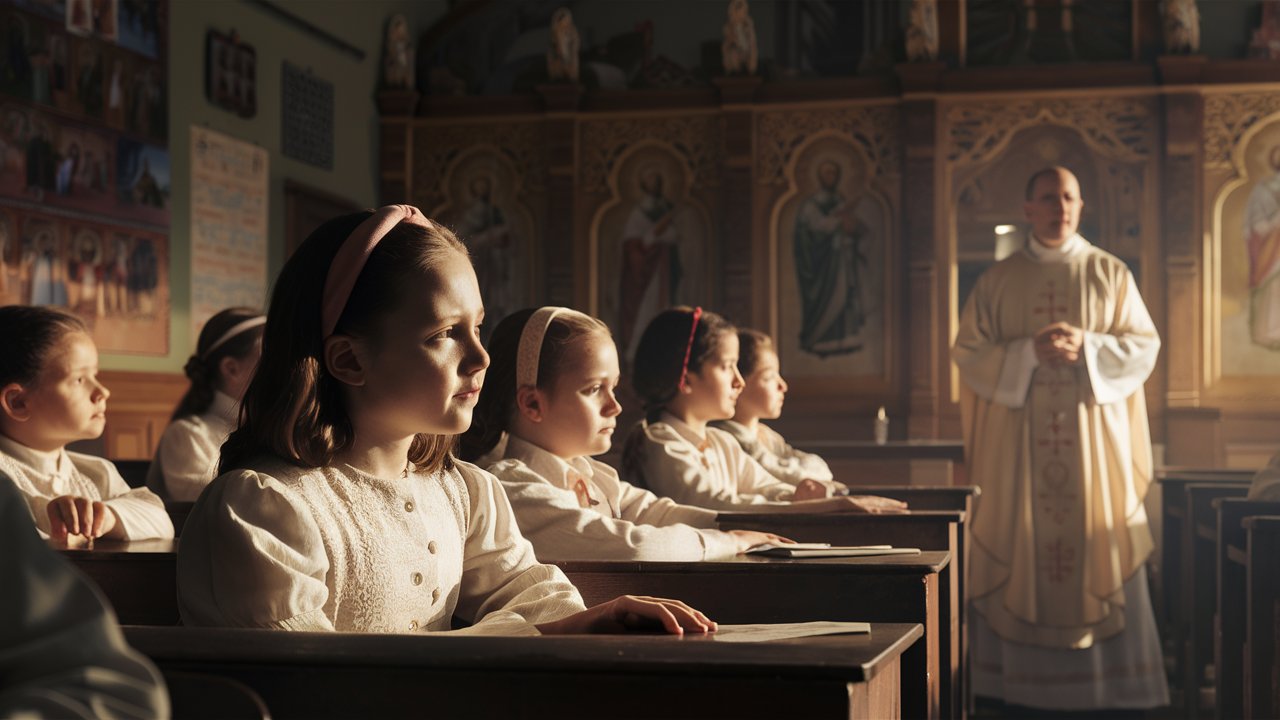
What is catechism? Catechism is a summary of principles often in question-and-answer format used for religious instruction. It helps people understand the core beliefs and practices of their faith. Why is it important? It provides a structured way to learn about religion, making complex ideas easier to grasp. Who uses it? Primarily, Christians use catechism, especially in Catholic, Lutheran, and Anglican traditions. How is it taught? Through classes, books, and sometimes online resources. What are its benefits? It aids in spiritual growth, moral guidance, and community building. Is it only for kids? No, adults also study catechism to deepen their faith.
What is Catechism?
Catechism is a summary of principles often in question-and-answer format. It's used for religious instruction, especially in Christianity. Let's dive into some fascinating facts about catechism.
- Catechism comes from the Greek word "katecheo," meaning to teach orally.
- The Catholic Church has a comprehensive catechism called the "Catechism of the Catholic Church" (CCC).
- Martin Luther wrote the "Small Catechism" in 1529 to educate children and the uneducated.
- The Heidelberg Catechism is a key document in Reformed Christian traditions, written in 1563.
- Catechisms are not exclusive to Christianity; other religions use similar methods for teaching.
Historical Background of Catechism
Understanding the history of catechism helps us appreciate its role in religious education.
- The first catechisms date back to the early Christian church, around the 4th century.
- St. Cyril of Jerusalem wrote one of the earliest catechisms in the 4th century.
- The Council of Trent (1545-1563) mandated the creation of the Roman Catechism to counter the Protestant Reformation.
- John Calvin also wrote a catechism in 1545, emphasizing Reformed theology.
- The Baltimore Catechism was the standard Catholic catechism in the United States from 1885 to the 1960s.
Structure and Format
Catechisms often follow a specific structure to make learning easier.
- Most catechisms use a question-and-answer format for clarity.
- The Apostles' Creed, Lord's Prayer, and Ten Commandments are common elements in many catechisms.
- Luther's Small Catechism includes explanations of the sacraments of Baptism and the Eucharist.
- The Westminster Shorter Catechism consists of 107 questions and answers.
- The Heidelberg Catechism is divided into 52 sections, one for each week of the year.
Purpose and Use
Catechisms serve various purposes in religious communities.
- They are used to teach the basic tenets of faith to new converts.
- Children often learn catechisms as part of their religious education.
- Catechisms help standardize religious teachings across different regions.
- They provide a reference for clergy and laypeople alike.
- Catechisms are often used in confirmation classes to prepare young people for full membership in the church.
Modern Catechisms
Even today, catechisms play a vital role in religious education.
- The Catechism of the Catholic Church was updated in 1992 to address modern issues.
- Digital catechisms are now available, making them accessible to a broader audience.
- Some churches use interactive apps to teach catechism.
- Online courses offer catechism classes for those who can't attend in person.
- The New City Catechism is a modern, ecumenical catechism designed for today's Christians.
Catechism in Different Denominations
Different Christian denominations have their unique catechisms.
- The Anglican Church uses the "Book of Common Prayer" for catechism.
- Orthodox Christians have the "Orthodox Catechism" by St. Philaret of Moscow.
- The Lutheran Church uses Luther's Small and Large Catechisms.
- Reformed Churches often use the Heidelberg and Westminster Catechisms.
- The Methodist Church has its own catechism, emphasizing Wesleyan theology.
Final Thoughts on Catechism
Catechism, a cornerstone of religious education, has shaped countless lives through its teachings. From its origins in early Christianity to its role in modern faith communities, catechism remains a vital tool for imparting spiritual knowledge. Whether you're a student, teacher, or curious learner, understanding these 30 facts can deepen your appreciation for this age-old practice. Catechism's structured approach helps individuals grasp complex theological concepts, fostering a stronger connection to their faith. By exploring its history, methods, and impact, we gain insight into how catechism continues to influence religious education today. Keep these facts in mind as you delve deeper into your spiritual journey, and remember, the lessons learned through catechism can provide guidance and wisdom for a lifetime.
Was this page helpful?
Our commitment to delivering trustworthy and engaging content is at the heart of what we do. Each fact on our site is contributed by real users like you, bringing a wealth of diverse insights and information. To ensure the highest standards of accuracy and reliability, our dedicated editors meticulously review each submission. This process guarantees that the facts we share are not only fascinating but also credible. Trust in our commitment to quality and authenticity as you explore and learn with us.


